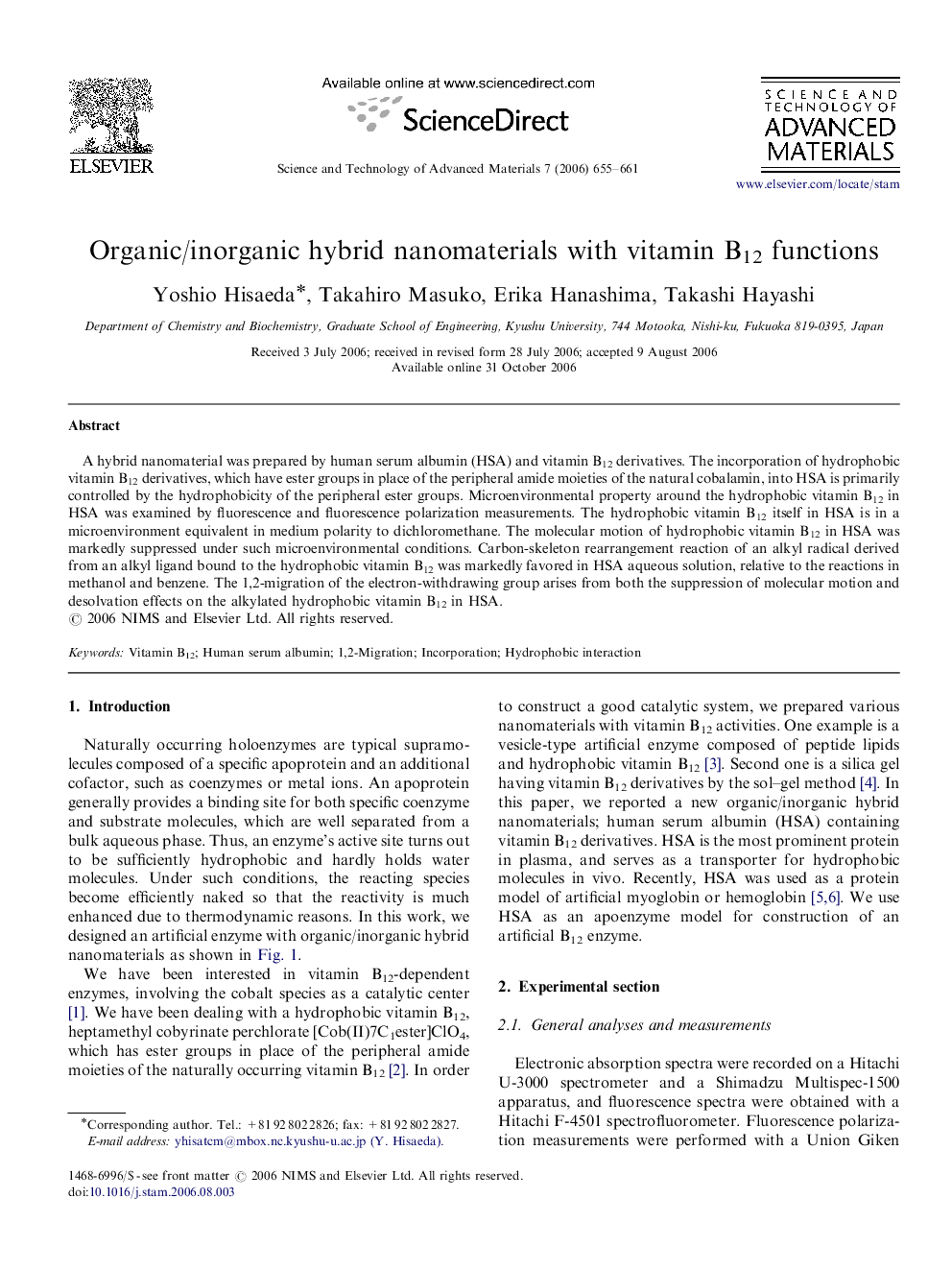| Article ID | Journal | Published Year | Pages | File Type |
|---|---|---|---|---|
| 1590892 | Science and Technology of Advanced Materials | 2006 | 7 Pages |
Abstract
A hybrid nanomaterial was prepared by human serum albumin (HSA) and vitamin B12 derivatives. The incorporation of hydrophobic vitamin B12 derivatives, which have ester groups in place of the peripheral amide moieties of the natural cobalamin, into HSA is primarily controlled by the hydrophobicity of the peripheral ester groups. Microenvironmental property around the hydrophobic vitamin B12 in HSA was examined by fluorescence and fluorescence polarization measurements. The hydrophobic vitamin B12 itself in HSA is in a microenvironment equivalent in medium polarity to dichloromethane. The molecular motion of hydrophobic vitamin B12 in HSA was markedly suppressed under such microenvironmental conditions. Carbon-skeleton rearrangement reaction of an alkyl radical derived from an alkyl ligand bound to the hydrophobic vitamin B12 was markedly favored in HSA aqueous solution, relative to the reactions in methanol and benzene. The 1,2-migration of the electron-withdrawing group arises from both the suppression of molecular motion and desolvation effects on the alkylated hydrophobic vitamin B12 in HSA.
Related Topics
Physical Sciences and Engineering
Materials Science
Materials Science (General)
Authors
Yoshio Hisaeda, Takahiro Masuko, Erika Hanashima, Takashi Hayashi,
